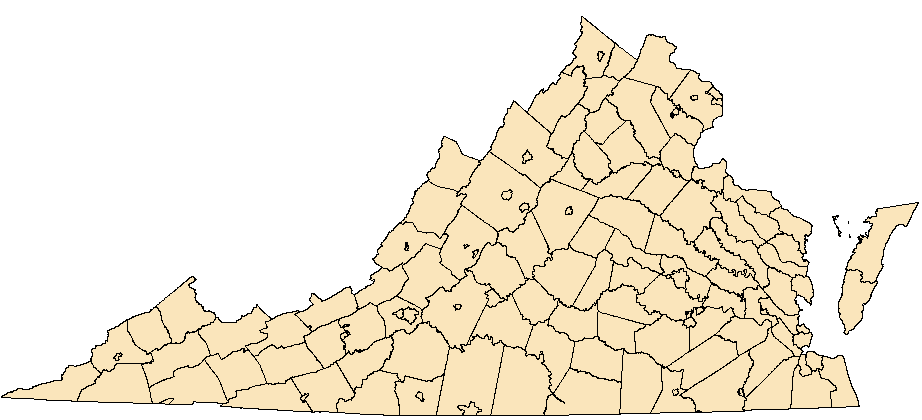Neonympha mitchellii French, 1889
Mitchell's Satyr
NatureServe Global Rank: G2
Virginia State Rank: S1
VA DGIF Tier: I
Federal Legal Status: Endangered
Virginia Legal Status: Endangered
Description: The Mitchell's Satyr is a medium sized butterfly that is brown on the dorsal side although ventral wing markings can often be seen through the wing. The ventral side displays orange lines on the front and back wings, and has four spots (largest two in the middle) on the front wing and five or six rounded eye-spots on the hind wing.
Similar species: Mitchell's Satyr is most similar to other Neonympha species but can be separated with the four eyespots on the ventral front wing, while others in the genus have two or less. It is also vaguely similar to the Carolina Satyr (Hermeuptychia sosybius) and the Little Wood-Satyr (Megisto cymela) which both have a different arrangement of spots and have much darker colored spots as well.
North American Range: There are few populations that are widely isolated, existing in Michigan, Indiana, North Carolina, Alabama and Virginia, extirpated from Ohio and New Jersey.
VA Observations by Locality: Floyd


Flight season and broods: The main brood occurs in July in Virginia.
Habitat and Food Plants: Open wetlands with a grass component, including ferns, beaver ponds and other open sedgelands. They host on sedges although the exact species is not certain.
Behavior and Ecology: Individuals have a slow and bouncy flight through the wetlands they inhabit, often stopping to perch on the grasses. They are believed to disperse along waterways.
Population trend and potential threats: Mitchell's Satyr has been extirpated from previous strongholds but seems capable of colonizing very disturbed areas with similar attributes. The population has been on the decline lately and destruction of their preferred habitat seems to be the biggest threat to their existence.
Management practices: The few and isolated populations should be monitored regularly and its wetland habitat protected.
References: Cech, R. and G. Tudor. 2005. Butterflies of the East Coast. Pg. 250. Princeton University Press.
Opler, P. A. 1992. A Field Guide to Eastern Butterflies. Peterson Field Guides
Pyle, R. M. 1981. Field Guide to North American Butterflies. National Audubon Society.
Virginia Department of Conservation and Recreation, Natural Heritage Program, 600 E. Main St., 24th Floor, Richmond, VA 23219
This atlas was compiled
by the VA Natural Heritage Program with funds provided by the VA Dept. of Game and Inland Fisheries through a state wildlife grant
from U.S. Fish and Wildlife Service
Questions/Comments? Check the contacts page |
Internet Privacy Policy Statement
Last Modified: Friday, 26 February 2021, 03:21:56 PM